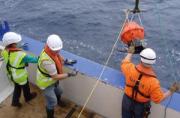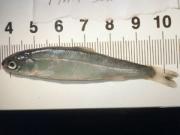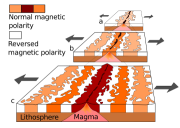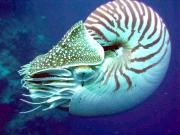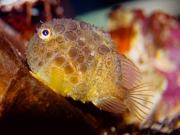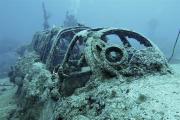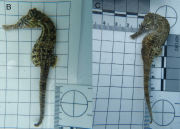Radio Program
Our regular Science and the SeaTM radio program presents marine science topics in an engaging two-minute story format. Our script writers gather ideas for the radio program from the University of Texas Marine Science Institute's researchers and from our very popular college class, Introduction to Oceanography, which we teach to hundreds of non-science majors at The University of Texas at Austin every year. Our radio programs are distributed at to commercial and public radio stations across the country.
Like an attic that hasn’t been explored in decades, the deep ocean is a big mystery. It’s inhabited by many species of life that we’ve never seen—perhaps millions of them. Yet scientists are picking through the stacks and boxes—finding new species all the time.
An example is a possible species of jellyfish deep in Monterey Bay, off the coast of California. Although scientists are still analyzing its DNA to confirm that it’s a new species, they’ve already given it a name: Atolla reynoldsi.
Oceanographers are getting ready to go deep. They’re deploying a network of sensors to explore the deepest parts of the oceans. The readings will help us understand more about our changing climate and the role of the oceans in storing heat.
The Suez Canal is an easy path for invaders. It’s brought hundreds of species of fish, crabs, and other non-native critters into the Mediterranean Sea. And they’re causing all kinds of problems.
The invaders traverse the 120-mile canal from the Indian Ocean and the Red Sea. And over time, they spread out. Many early invaders didn’t survive because the water was too cold. But the Mediterranean is warming much faster than the oceans as a whole. That makes it more comfortable for the newbies, and less comfortable for native species.
A single fish that’s only two and a half inches long doesn’t usually generate much excitement. But a juvenile chum salmon found off the northern coast of Alaska created some scientific buzz. It suggests that the species is expanding its range northward in response to our warming climate.
Lots of people would like to experience what appears to be happening on the ocean floor: a slowdown in the rate of spreading out. A recent study suggests that rifts at the bottom of the oceans are spreading more slowly than they were as recently as 15 million years ago.
The chambered nautilus comes from a long line of survivors. Its earliest ancestors appeared more than 500 million years ago. Its family tree has persisted through five global extinctions, including the one that killed the dinosaurs.
But the modern-day nautilus may not do so well. It’s threatened by the current extinction event, caused by our changing climate. And it’s also threatened by its own beauty. People are killing millions of them for their spiral shells and the shells’ mother-of-pearl lining.
Fjords are some of the most beautiful features on the planet. But they may not be all that beautiful deep down. They may release as much methane into the atmosphere as all the deep oceans combined.
Fjords are jagged notches in rocky coastlines. They formed as glaciers gouged deep into the rock. They’re small—they account for about a tenth of a percent of the total ocean surface. Most are fed by rivers or by streams from melting glaciers.
Judging by its name alone, you might expect the Pacific spiny lumpsucker to be a fearsome creature. But divers often describe the fish as cute and comical. They’re small and round, they don’t swim well, and they’ll even eat from a diver’s hand. So, despite the name, the Pacific spiny lumpsucker is nothing to fear.
The fish is typically no more than an inch or two across. It’s found near the coast from Washington State to northern Japan. It lives mainly in shallow waters close to shore.
Many dead airliners spend the afterlife in the desert—in “boneyards” where they’re stripped for spare parts and scrap metal. But a few are ending up in wetter graveyards—as artificial reefs at the bottom of the sea. They provide an anchor for coral and oysters, which attract fish and other marine life. They also attract divers, boosting marine tourism.
People have made reefs out of everything from boats to piles of tires to subway cars. And crashed airplanes have made good reefs as well. But sinking an aircraft on purpose has become popular only in recent years.
Sweetings Pond is its own watery universe. It’s on Eleuthera, an island in the Bahamas. The pond is about a mile and a half long and up to 45 feet deep. It’s separated from the ocean by a narrow strip of land. Seawater and microscopic organisms pass through pores in the limestone rock. Otherwise, the pond is isolated from the rest of the marine world. Even so, it’s home to an abundance of life—octopuses, brittle stars, clams, and other organisms.


